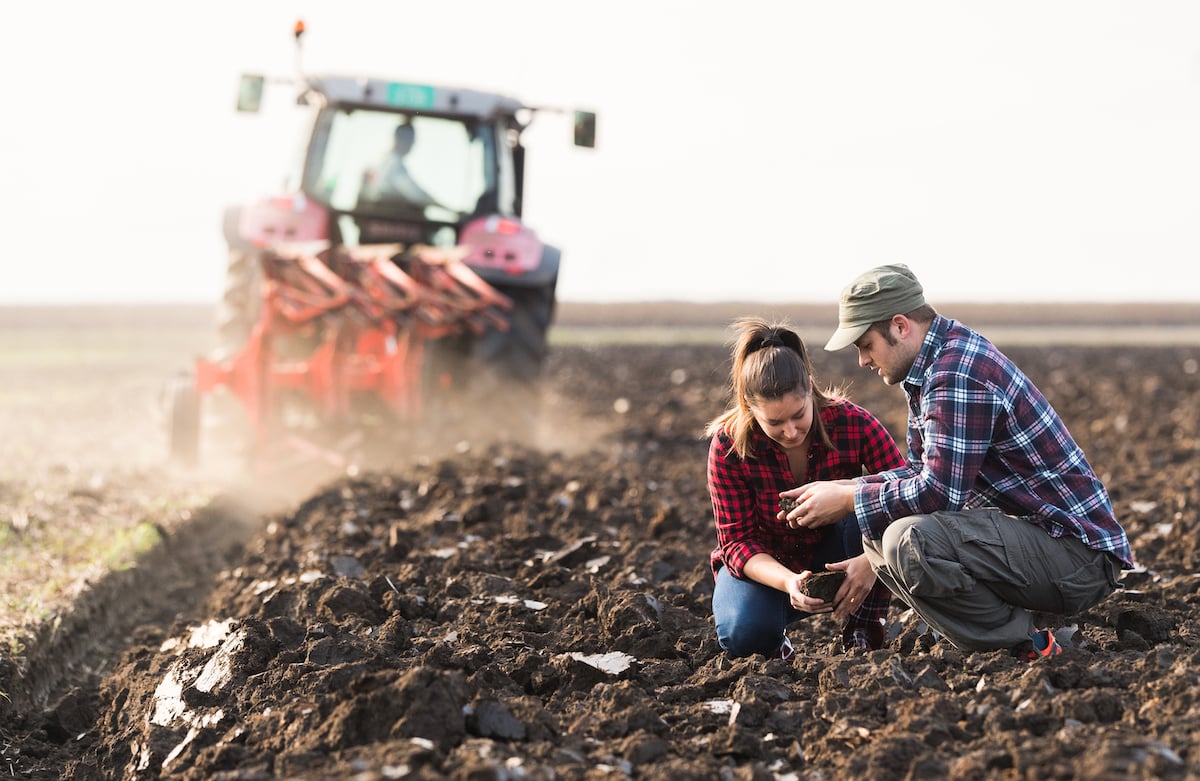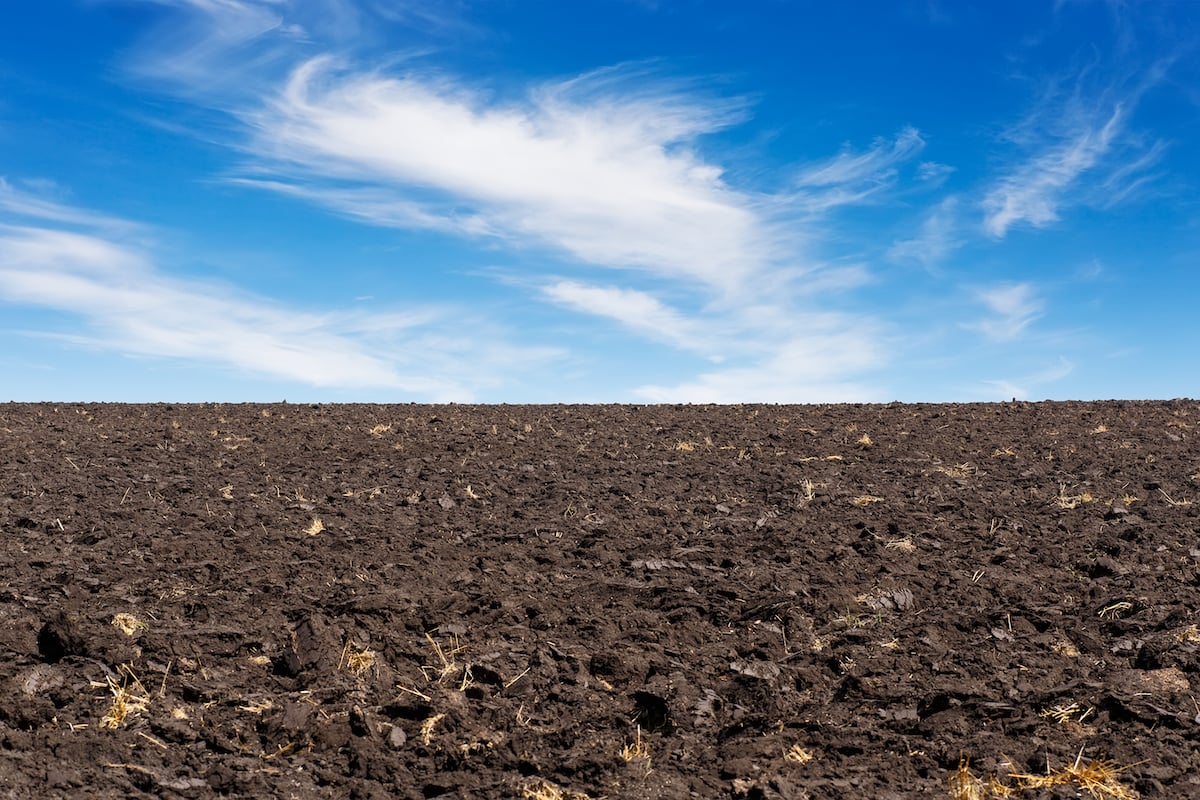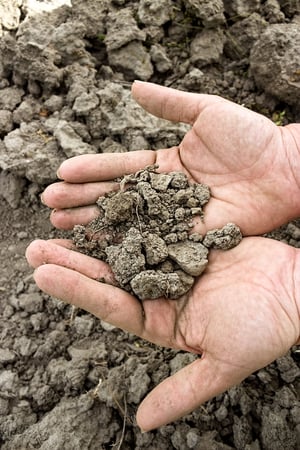Please note: this post originally appeared on The Land.

Despite decades of minimum and zero tillage systems, some farmers are pulling the offsets out of retirement and racking up the hours on the tractor.
Speaking to farmers, the motivation varies, for some it is salvage control of weeds that were not effectively sprayed earlier in the season, for others it is a strategic action for the deep placement of nutrients or lime.
“Despite what they say in surveys, driving around it looks like one paddock in three has been burnt and one in four has been cultivated in the Riverina”
- Dr Mark Conyers
Whatever the motivation, researchers are warning there are trade-offs and risks associated with the mechanical disturbance of soil that need to be taken into account.
Strategic lime
Retired soil scientist, Dr Mark Conyers, said his work on strategic tillage, carried out over the last decade, was based around the need to incorporate lime to address acidity in the southern grain belt.
“Lime is not very soluble, if you do not incorporate it you will be waiting two to four years before the alkalinity reaches where the seedling is, and a lot longer before it is down into the root zone,” he said.
“I asked the question, if you need tillage to incorporate lime, or to control mice or herbicide resistant weeds, how much damage does it do and how long does it take to recover.”
Dr Conyers said based on research across four sites in southern NSW, one pass with a scarafier or offset discs had only a small effect on soil aggregate stability, a measure of the soil structure.
“There was a decrease, depending on the site and the year, but it ranged from zero to 14 per cent,” he said.
“Some of this work was also one in Queensland, we deliberately stayed away from sodic soils, on sodic soils I would be frightened to conduct a tillage operation.”
- Dr Mark Conyers
“At most sites it recovered in one to two seasons, there was only one site that took a hammering and it took about four years to recover.”
Dr Conyers said while his research showed only transient damage to soil structure, this needed to be qualified, particularly for soils classified as sodic, which included large areas of the northern cropping belt.
“Some of this work was also done in Queensland, we deliberately stayed away from sodic soils, on sodic soils I would be frightened to conduct a tillage operation.”
Dr Conyers said while tillage could be a tool to control some weeds, others could be brought up, or survive burial.
“Tillage has got to be part of an integrated weed management system, it is not a self contained solution,” he said.
“I wouldn’t plough until you knew you were going to be sowing”
- Dr Mark Conyers
Dr Conyers said the tillage operations in his research were carried out just prior to sowing a crop.

“Our summer storm frequency is about January to March, we have recommended leaving any strategic tillage to as late as possible before sowing so you retain ground cover,” he said.
“I wouldn’t plough until you knew you were going to be sowing.”
Dr Conyers said he had seen a significant amount of tillage occur since 2016.
“Despite what they say in surveys, driving around it looks like one paddock in three has been burnt and one in four has been cultivated in the Riverina of NSW,” he said.
Northern region
University of Queensland, chair tropical agronomy, Professor Michael Bell, said the increase in tillage experienced in southern NSW was also being seen across the northern NSW and Queensland grain belt.
“We are certainly seeing more tillage then we did five years ago,” he said.
“I think the biggest driver has been herbicide resistant weeds and salvage situations.
“If you are on a strongly structured black soil that is non-sodic, you have far less risk from tillage compared to a sodic soil where you finally have some structure after twenty years of zero-till and you go and beat that up with an offset”
- Professor Michael Bell
“Where everything else has failed or things have gotten away on you we are seeing the offset discs come back out.
“I’m not sure how effective that is in the longer term, in terms of seedbanks and other considerations, but certainly there is more tillage being done.”
Professor Bell said whether tillage was the right option, depended on the type of tillage and the situation.
“I would argue that type of tillage is more damaging to a soil then tillage done for deep placement of nutrients.
“In that instance you are talking about a ripper tyne, with minimal surface disturbance, every 50 to 70 centimetres, so the surface soil condition afterwards is different.”
Professor Bell said the third type of tillage he had seen carried out in the region was the use of Kelly chains when you have heavy stubble loads after a winter crop.
“After the 2016 crop there was a lot of Kelly chain activity to manage stubble prior to the next season.”
Nutrient placement
 Professor Bell said his work had shown tillage done once every four or five years to place nutrients had shown significant results.
Professor Bell said his work had shown tillage done once every four or five years to place nutrients had shown significant results.
“The biggest benefit of deep placement is you are overcoming years of depletion of subsoil nutrients by putting the nutrients back into the layer they have come from,” he said.
“Specifically nutrients that don’t move in water, such as phosphorus and potassium.
“My plea is for people doing it is that they make sure they get maximum value out of it”
- Professor Michael Bell
“In our systems whenever the top soil is dry we are pulling these nutrients out of the subsoil layers, they do not leach back, unlike more mobile nutrients such as sulfur and nitrogen, so eventually you run out.
“The main aim of deep banding treatments is to replenish nutrients we can’t get back into that part of the soil profile any other way.”
Proceed with caution
Professor Bell said growers needed to proceed with caution when looking at tillage for deep placement and be strategic in the timing.
“If you have good stubble cover you would be loathe to disturb that,” he said.
"I think if we manage our nutrients properly, we won’t consider deep placement unless there are a number of things in our favour.
“Namely, when we have less stubble cover to loose, such as after a chickpea crop rather than after a wheat crop.”
Professor Bell said while tillage could be used as a tool it needed to be used with caution.
“In the clay soils I deal in, I really think we have to keep tillage to the absolute minimum,” he said.
“But at the same time, in our zero tillage systems it is increasingly evident that we do have to till occasionally.
“My plea is for people doing it is that they make sure they get maximum value out of it.
“For example if you have to till to control weeds and you have some low subsoil phosphorus, take the opportunity to address both issues at the same time.
“You don’t use the same tillage equipment for both, but stop and think about the other things tillage could help you with, or conversely what are the other risks you have from the soil you are managing.
“If you are on a strongly structured black soil that is non-sodic, you have far less risk from tillage compared to a sodic soil where you finally have some structure after twenty years of zero-till and you go and beat that up with an offset.
“Understanding those risks is really important as well.”
Western Australia
Department of Primary Industries and Regional Development, research scientist, Stephen Davies said in Western Australia the soil types where strategic tillage was occurring were often different to those of eastern states.
“Our strategic tillage is generally deep tillage, using implements that are engaging with and trying to change the subsoil conditions,” he said.
“That is because we have these deeper, sandier, lighter textured soils that often have subsoil constraints.
“Because our soils don’t hold moisture and nutrients all that well, we really need to get a good rooting depth to achieve good productivity.
“Crops on these soils are responsive to strategic deep tillage, and we typically see yield increases in excess of 500 kilograms per hectare, with benefits lasting for 10 or more years when multiple constraints are addressed and soils are well-managed in subsequent seasons.”
Dr Davies said deep ripping on some of the sand plains in WA has been around for at least thirty years, though with varying popularity over time, while deep soil mixing or inversion has increased over the last decade.
“These soils are quite responsive to deep tillage”
- Dr Stephen Davies
“Our subsoil acidity has gotten worse through agriculture and the intensification of cropping, our levels of deep subsoil compaction have gotten worse because our machinery has gotten bigger and we have more problems with topsoil water repellence which is related to both the farming system and the climate,” he said.
Dr Davies said a range of deep tillage practices were being carried out to address these issues including ripping for compaction, deep incorporation of lime, subsoil clay spreading and modification of water repellent topsoil layers, through deep soil mixing or inversion.
He said depending on the practice and the soil type there were varying risks which needed to be considered by farmers.
“Deep ripping with fairly narrow points leaves the surface reasonably intact but breaks up the hard pan underneath,” he said.
“However there are still issues, re-compaction and problems with seeding depth are risks and some rippers create more disturbance resulting in more risk of wind erosion.
“Tools used for deep mixing, for fixing water repellence or incorporating lime will typically remove all the soil cover in the process, so given they are sands the risk of wind erosion is massive.
“It is an acute short-term risk, because it is a one-off tillage, once cover is re-established systems go back to minimum tillage and stubble retention.”
Dr Davies said when growers carried out delving or soil inversion the increased clay content in the top soil, could result in issues of surface crusting and its effects on seedling establishment, and changes in the interaction with pre-emergent herbicides, making them more effective but also risking greater crop damage.
“The damage can be quite significant in some cases.”
Dr Davies said the department had an extensive research program on strategic tillage and growers could access information on the program through the department’s website or papers presented at past and upcoming GRDC grains research updates.
He said current research by DPIRD, with investment from the Grains Research and Development Corporation, is focused on managing major, and sometimes interacting, soil constraints and ensuring long term cropping benefits by minimising subsequent compaction through controlled traffic and acidification through ongoing lime application.
“Also new areas include the impact on soil borne diseases and temperature stresses, which has shown some interesting results."

